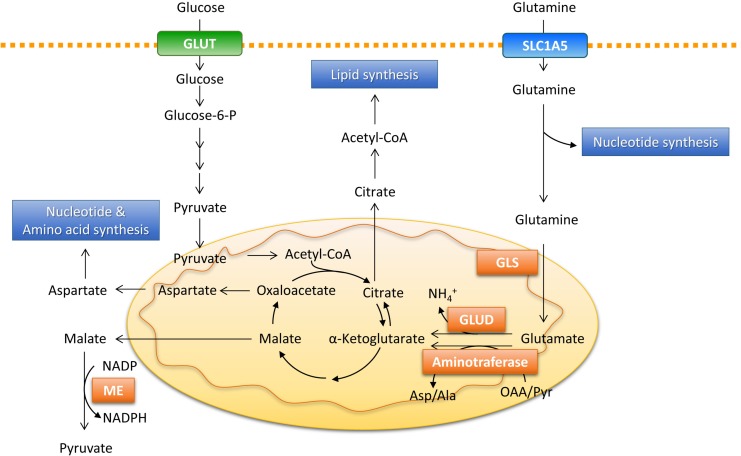Fig. 1.
Glutamine provides a nitrogen and carbon source in biosynthetic pathways. Glutamine enters the cells via the SLC1A5 transporter and contributes to nucleotide biosynthesis directly or is converted to glutamate by GLS. Glutamate is converted to α-ketoglutarate by either GLUD or aminotransferases. Malate from the TCA cycle can be exported to the cytoplasm and converted to pyruvate and generate NAPDH by ME. Oxaloacetate can be converted to aspartate, which supports amino acid and nucleotide synthesis. Glutamine-derived α-ketoglutarate can provide an alternative carbon source for the formation of acetyl-CoA required for lipid synthesis via reductive carboxylation. Glucose-6-P: glucose-6-phosphate, GLS: glutaminase, GLUD: glutamate dehydrogenase, ME: malic enzyme.

